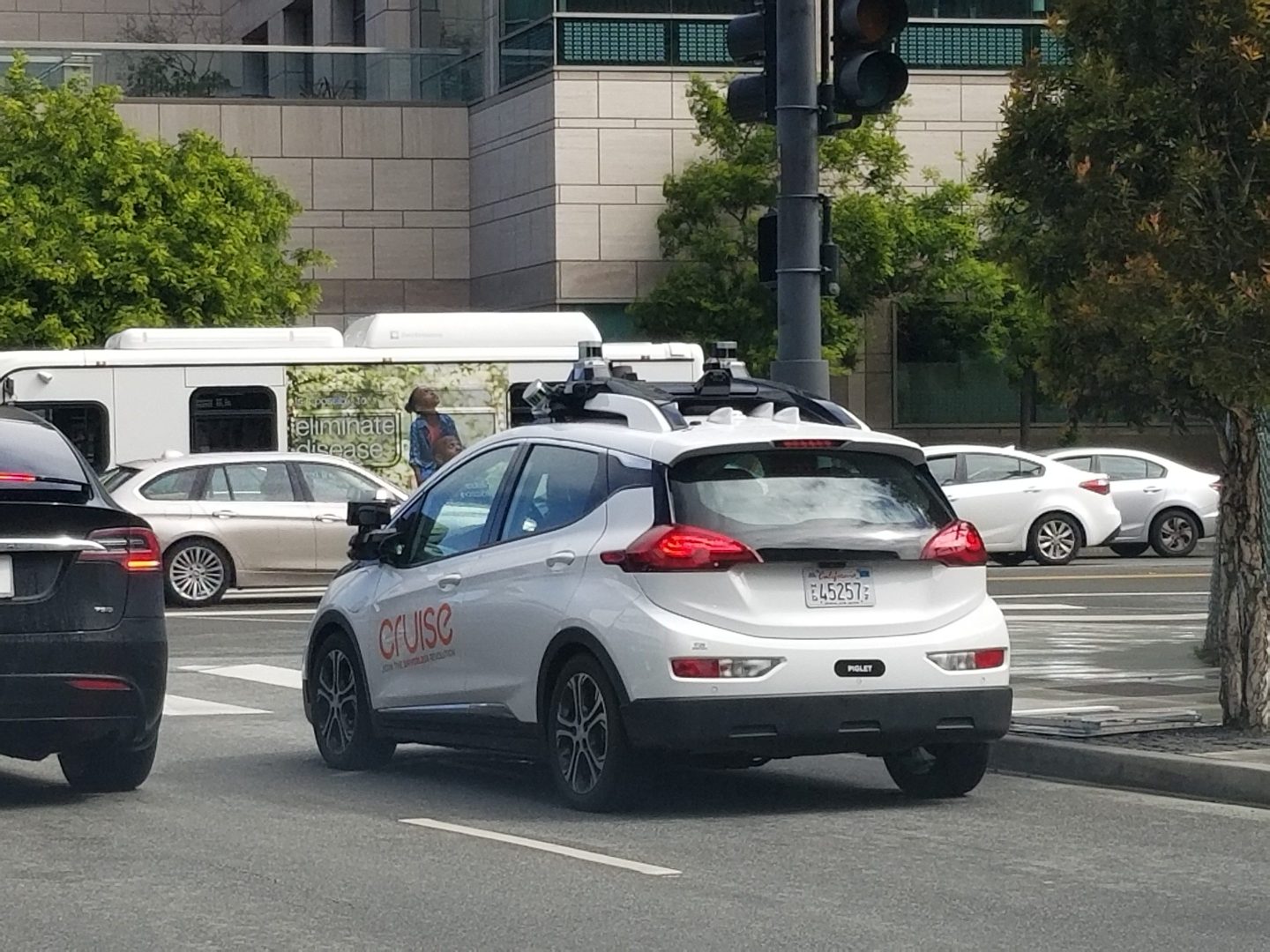Hello, it’s tech fellow Andrea Guzman here to kick off your week.
Last month, I talked to Cruise CEO Kyle Vogt about the public perception of autonomous vehicles, like the fleet of robotaxis the company operates in Arizona, California, and Texas.
He mentioned that some of the challenges are that some people’s only exposure to the technology is by reading headlines or trying driver assistance systems, which he says will “tell you a very different story than a vehicle that has been validated and battle tested.”
One such battle-tested Cruise vehicle hit a San Francisco public bus a couple of weeks ago, resulting in a voluntary recall of 300 of its robotaxis for a software update. The self-driving software hadn’t accurately predicted the movement of the bus and hit the brakes too late. The incident was a minor fender bender and caused no injuries.
But it happened as San Francisco is set to be the first city in the U.S. to have two driverless taxi services in operation by the end of the year (Cruise and Alphabet-owned Waymo) and following previous instances of the vehicles interfering with public transit. Late last year, almost 100 incidents involving Cruise vehicles were reported to the city, with most of them happening in areas where buses, light rail or streetcars operate. This year, Associated Press reporters who took a ride in a Cruise robotaxi said the vehicle briefly prevented the arrival of an oncoming bus.
The recall touches on some important questions that researchers have been wondering for years: How will autonomous vehicles affect public transit? And, if AVs become more widespread, how will that affect the broader public equity goals currently served by mass transit like buses and light rail?
The Union of Concerned Scientists noted that AVs can boost job accessibility by car, but there’s also a downside.
“While AV rides may be less expensive than car ownership today, car travel is still likely to remain a more expensive mode of travel than transit, so the switch will be a burden for low income communities,” they wrote.
The risk of AVs causing injuries to people is the worry that most often comes to mind when weighing tests of the technology on city streets, but another key concern is the possible inconveniences it causes when so many people rely on the bus or light rail to get places. In San Francisco, for example, 716,000 people ride the Muni system on an average weekday.
Autonomous vehicles may eventually become a form of public transportation in their own right. In fact, some believe that private car ownership will become less useful when we’re surrounded by fleets of self-driving robotaxis that we can hop into. But we’re long way from that being a reality.
Cruise’s Vogt said last month’s collision with the bus was a unique incident, but that software recalls are likely to become more commonplace in the age of autonomous vehicles. Vogt wrote that the swift updating of the cars’ software demonstrates a benefit of autonomous technology, which can be constantly monitored and improved upon.
That may be true, but so is the fact that for some city residents, these improvements will come at the cost of stalled bus rides to get to work, school, or to socialize.
Want to send thoughts or suggestions to Data Sheet? Drop a line here.
Andrea Guzman
Data Sheet’s daily news section was written and curated by Andrea Guzman.
NEWSWORTHY
How A.I. could shape elections. Some experts say we should expect to see heightened misinformation in the 2024 U.S. presidential election due to rapid advances in A.I. capabilities such as Chat-GPT and voice cloning tools from ElevenLabs that could be used to spread falsities that fool voters. But others aren’t as worried. Past elections have already seen such high levels of human-written misinformation that new A.I. language models might not make much of a difference. “I don’t think this will completely change the game and 2024 will look significantly different than 2020 or 2016,” Chris Meserole, a fellow at the Brookings Institution said.
Tesla’s new factory. The electric automaker will open a factory in Shanghai capable of producing 10,000 Megapack batteries a year. Megapack batteries are not for cars—they're industrial batteries that help stabilize the power grid and prevent outages, storing power from intermittent sources for use when demand is high. CEO Elon Musk says the factory in China will supplement output from another Megafactory in Lathrop, California. Construction is set to kick off during the third quarter of this year, with production starting about halfway through 2024, Chinese state media outlet Xinhua reported.
SVB Depositors asked to detail ties to the bank. Sen. Elizabeth Warren and Rep. Alexandria Ocasio-Cortez sent letters Sunday to 14 of the largest depositors with Silicon Valley Bank that raised concerns over the bank’s relationship with some of the venture capitalists and tech founders who made up its customer base, Bloomberg reports. The letters were sent to companies like Circle Internet Financial, BlockFi Inc., and Eiger BioPharmaceuticals asking about the length of their relationship and the amount of money deposited with SVB. The lawmakers expressed interest in whether SVB coddled its largest VCs and provided special perks in return for access to huge unsecured sources of short-term funding.
SIGNIFICANT FIGURES
40.5%
—The year-on-year drop in Apple’s PC shipments in the first quarter, according to research firm IDC. The overall PC market declined 29% in the first three months of the year, with all major companies seeing double-digit declines, but Apple's Mac business took the biggest hit.
IN CASE YOU MISSED IT
Introducing Fortune’s Crypto 40: Blockchain businesses built to last, by Jeff John Roberts
Uber’s CEO moonlighted as a driver and it changed the way he operates the company, by Tristan Bove
‘From chaos to moments of irresponsibility’: Top execs reportedly accused Elon Musk of ‘perpetuating racism’ on Twitter in leaked emails, by Steve Mollman
Former Google CEO Eric Schmidt doesn’t support a 6-month A.I. pause ‘because it will simply benefit China’, Prarthana Prakash
Elon Musk says he’s ‘dumb way more often than I’d like to be’ as Tesla strategy questioned, by Steve Mollman
BEFORE YOU GO
Walmart goes in on EV charging. By 2030, Walmart plans to build an EV fast-charging network at thousands of its locations across the U.S. The retail giant’s goal is to serve people needing a charge where they live, while they’re making road trips, and with their “every day low price.” According to Walmart, a store or Sam’s club is located within 10 miles of about 90% of Americans, so it’s uniquely positioned for creating a network that’s accessible to drivers in all pockets of the country, whether it's a city, suburb, or rural area. When it’s made, it’ll add to Walmart’s existing 1,300 EV fast-charging stations at more than 280 U.S. facilities.
This is the web version of Data Sheet, a daily newsletter on the business of tech. Sign up to get it delivered free to your inbox.












